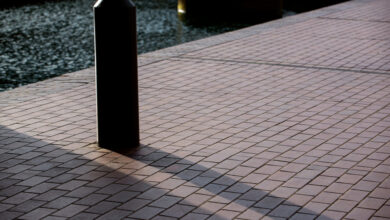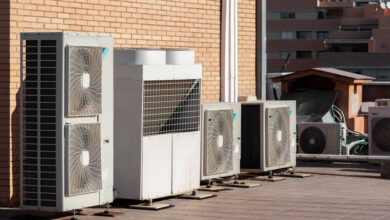Dominating Sustainable Interior Design Trends for 2022

Eco-friendliness is becoming more prominent in various aspects of our lives. From sustainable shopping to eco-friendly transportation, we’re seeing more earth-friendly activities everywhere. Interior designs are no exception. With climate change becoming more disturbing, it’s time we started thinking about sustainability in a more serious manner. With that in mind, we’re bringing to you the top sustainable interior design trends that will dominate in 2022.
Reused and recycled items are a must
Recycling is the epitome of sustainability. So, when you think about the ways to reduce carbon footprint with your home remodeling, think of reused and recycled items. When was the last time you took a look at vintage items that your grandmother or great-grandmother had left you?
Do your parents have a basement filled with old armoires, nightstands, and coffee tables that can serve their purpose for another ten years? Ask around and see if you can use any of those items instead of buying new furniture. Rotate furniture and have your bedroom nightstand serve as a side table for your living room. The options are endless when you have a variety of items to reuse.
Introduce energy-efficient lighting
Energy is another significant aspect of having a more sustainable interior. Replace your old bulbs with a luminaire LED to ensure a long life for your bulbs. LED lights are made to last for up to ten years without causing any worry to those living in areas with frequent power outages.
Being much cooler than other bulbs, LED lights won’t emit as much heat, thus making you feel more comfortable in your home. Speaking of electricity, consider installing a surge protector to prevent your electric devices from using vampire energy.
Lean towards natural materials
Are you already looking into new furniture upholstery or living room floor décor? Natural materials are in high demand ever since sustainability become more popular. Think terracotta, bio-glass, reclaimed wood, recycled metal, and bamboo as some of the best options for your home.
Forget about rubber doormats and go for other more sustainable alternatives such as jute or sisal. Invest in eco-friendly rugs that will offer both aesthetic values and help you reduce your carbon footprint. Soybean oil, PET, felt, and wool floor rugs are some of the best eco-friendly options for your home. Don’t forget to choose natural materials for pillow covers, drapes, and table cloths for the ultimate eco-friendly home décor.
DIY artwork
Making items from scratch gives a sense of accomplishment. When you add the aspect of protecting the planet to it, then the item made becomes even more appreciated and valued. So, the next time you’re about to spruce up your interior, consider making wall art on your own.
DIY projects are everywhere. All you need to do is look for your passion and the best way to express it. Paintings, DIY mirrors or photo frames, or any other type of wall art that you can make will look lovely on the wall. Do you need to personalize your living room more? Think about creating a gallery wall with family photos that you’ll put in DIY photo frames.
Staircases is also one of the best choices to make your interior attractive and also, wow your guests.
Second-hand furniture
Second-hand shopping is another smart way to become more sustainable. They don’t say anything, one person’s trash is another person’s treasure. That’s why you should consider visiting garage sales, thrift stores, and flea markets for unique second-hand items that can refresh your home quickly.
Even if they require a little touch-up to look immaculate, it’ll be more cost-effective and eco-friendlier to invest in a pre-used furniture item than to buy a brand new one.
Related Article: The Main Causes Of Sulfur Smell In Your Home
Low VOC paint
Painting the walls can be less damaging for your health and the environment, thanks to the pain innovations. Instead of having to endure the intoxicating smells of paints, with low VOC options, you can paint all the rooms in your home without jeopardizing your well-being.
Use non-toxic paints to help the environment and make home remodeling more enjoyable without all the fumes that used to make you feel sick. Latex paint, water-based paints, and milk paint are other good alternatives to high odor paints that will look just as beautiful without causing damage to your health.
Final thoughts
Becoming more eco-conscious is vital If we want to make our planet a better place for life. So, the next time you think about home improvement, try to lean towards as many sustainable options as possible.
From natural fabrics to second-hand furniture, low VOC paint, and DIY artwork, there’s so much you can do to contribute to a more sustainable interior in the year ahead of us. Follow eco-friendly trends and try to keep up with all the innovations in the field, to reduce your carbon footprint in as many ways as possible. Your planet and future generations will be very thankful.
Read Also: Modern Boundary Wall Design For Home




